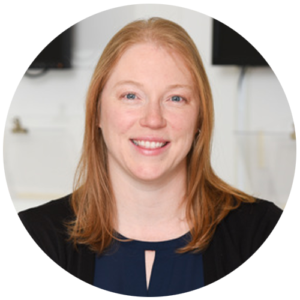Each year, about 30,000 new consumer products are getting launched. But only 40% of all developed products for that year actually launch and reach the market, and just 60% of those that launch are reported to generate revenue. Now think about this: a shocking 95% of newly launched products risk failure.
Most products fail due to a lack of understanding of diverse consumer needs.
Enter Curion, a holistic partner in product testing, consumer insights, and market research that helps brands connect to people. At Curion, our teams have mastered the art of connecting with consumers across all age groups, from the Silent Generation to Gen Z and beyond.
In our first article of our Generations article series, we explored six generations and revealed their spending power, shopping habits, motivators, size, values, and much more.
In this article, we put our selected team of experts under the microscope to learn their strategies and insights to bridge – and sometimes separate – generational gaps in product testing and consumer research. We’re sharing their real stories and experiences, supported by our consumer-polled primary data, and exploring how our teams adapt their approaches to extract valuable insights from diverse age groups.
With the help of our experts, our clients’ brands have created products that resonate with their target audiences – young, old, and everything in-between – to launch products confidently and successfully.
Meet our team of experts:
RACHEL ORONA
Director, Strategic Product Insights
KEEVY RUBO
Associate Director, Recruiting Operations
MICHAEL NESTRUD, PH.D.
VP, Research & Innovation
JILLIAN PIETA
Manager, Strategic Market Insights
RACHEL BUSS
AVP, Strategic Product Insights
Expand for the full list of questions for our experts
Can you tell us about your experience and expertise in working with different generations for consumer research?
Rachel Orona: As Director of Product Insights at Curion, I have an extensive background in designing qualitative and quantitative studies for CPG clients. I am passionate about customizing research methodologies to yield impactful insights tailored to each generation while meeting client objectives. My specialized expertise in kid testing and studies involving participants over 65 ensures that our research effectively addresses the unique preferences and behaviors of diverse age groups.
Keevy Rubo: As the Associate Director of Recruiting Operations, I handle the recruitment for all our projects at Curion. I work with consumers of all ages, which helps me understand their different preferences and behaviors so I can find the right people for each project, ensuring we get targeted and valuable insights from our consumers for our clients.
Michael Nestrud, PhD: As the VP of Research and Innovation at Curion, I am always working closely with clients to help them understand their consumers on a deeper level. My scientific and methodical approach focuses on uncovering the motivations and emotions behind consumer behavior. I’m passionate about finding innovative ways to measure these experiences, which helps brands to connect more effectively with their audience
Jillian Pieta: My background in qualitative research has shown me that every age group communicates uniquely. I thrive on creating an energized environment that encourages self-expression, especially for younger generations. Flexibility and comfort are key, allowing us to uncover those important details that might otherwise go unnoticed.
Rachel Buss: I specialize in product testing and quantitative research, working closely with Curion’s restaurant teams and clients. My background in Food Science and training as a RIVA moderator allow me to guide the design for effective sensory-centric tests for various CPG companies and restaurant clients.
What role does understanding different generational cultures play in your research approach?
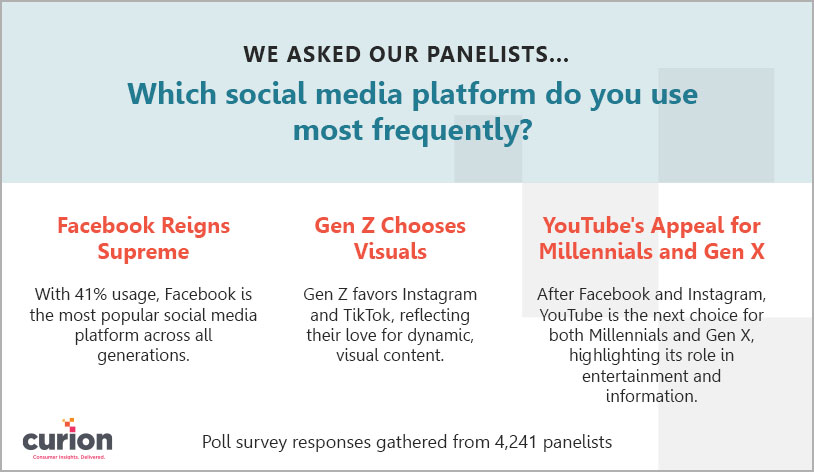 Rachel Orona: Each generation has a unique relationship with technology and communication. For example, the Alpha generation tends to have shorter attention spans, requiring more visually engaging content and shorter sessions to keep them focused. Gen Z, who use platforms like TikTok, find uploading photos and videos second nature, making them more comfortable with digital interactions. In contrast, Boomers often prefer traditional forms of communication, such as phone calls or in-person engagements, as they may be less comfortable with newer technologies.
Rachel Orona: Each generation has a unique relationship with technology and communication. For example, the Alpha generation tends to have shorter attention spans, requiring more visually engaging content and shorter sessions to keep them focused. Gen Z, who use platforms like TikTok, find uploading photos and videos second nature, making them more comfortable with digital interactions. In contrast, Boomers often prefer traditional forms of communication, such as phone calls or in-person engagements, as they may be less comfortable with newer technologies.
Michael Nestrud, PhD: Traditional methods don’t always capture the nuances across different age groups, so we’re always adapting. Understanding generational cultures is important for sensory science and innovation research. Different age groups and the different life experiences they have create distinct sensory preferences and ways of interacting with products. Research approaches need to be able to measure and address these differences so that product experiences reflect the needs of their intended targets.
Keevy Rubo: When our clients come to us with specific research objectives, it’s my job to make sure we’re bringing in the right consumers to participate in our tests to meet those needs. We keep our consumers engaged and understand what motivates them, so they can provide quality feedback. Younger panelists might like the opportunity to influence product development, while older ones might appreciate the social aspect of participating in a study. We’re building relationships with people of all ages and backgrounds to make sure they have positive experiences with Curion so they’ll want to participate in future studies.
How do you approach recruiting participants from various age groups, especially when it comes to younger children or older adults?
Rachel Orona: Recruiting younger children requires buy in from the parent, keeping in mind their development level to make sure the testing is appropriate for their attention span and is engaging. Also, it is important to consider timing, such as avoiding nap times or accommodating early bedtimes. For adults over age 65, we are mindful of physical limitations such as their preference to drive to the facility during daylight and allowing extra time for testing.
Keevy Rubo: We’ve got to be clever with our recruitment strategies for different generations. Gen Z can be tricky to pin down, while Gen X and Millennials are quick to jump on surveys and fill up the easier spots. So, we often target Gen Z first before opening it up to the others. When it comes to kids from Gen Z or Gen Alpha, we usually schedule sessions after 5 PM when school’s out and parents are off work. We have to adapt to each group’s lifestyle and habits to get the best mix of participants.
Jillian Pieta: For younger children, we adapt our methods based on group dynamics. Sometimes we’ll mix boys and girls, other times we’ll separate them. It’s interesting to see how this affects the conversation flow. With mixed groups, we often get more diverse perspectives, but separating them can help quieter voices be heard. It’s also useful to use articulation videos. We’ll have parents record their kids at home so we can listen to them talk about the category, the product, or topic we’re researching. We get a good sense of how these kids feel and respond in a more natural environment, and how comfortable and articulate they can be on the topic.
How do you create a comfortable testing environment for different age groups?
Rachel Orona: Sometimes we use a living room-style setup instead of a formal conference table to make younger panelists more comfortable. For very young kids, we let them sit on a parent’s lap. In central location tests, we do a group practice run to familiarize them with the process. We make sure our moderators and staff are experienced with working with younger children and use age-appropriate language in instructions and questions.

Keevy Rubo: Sometimes, bringing a friend or sibling along can make a huge difference for younger kids. It helps them feel more at ease and leads to more open and natural responses. And then with adults, it’s the opposite. We try to avoid having people who know each other in the same group to avoid any peer influence so we get more honest, individual opinions. We might set up a playful space for younger children, while for teens, we might create a more ‘cool’ vibe. For older adults, it’s more about comfort and accessibility.
What are some key differences and similarities you’ve noticed when testing products with younger versus older age groups?
Rachel Orona: Younger consumers, particularly Gen Z, are much more comfortable with sharing selfie videos and photos, and they tend to complete surveys more quickly. In contrast, older consumers take more time to provide thoughtful responses, especially when it comes to answering open-ended questions and filling out the survey in detail. Children under age 9, often give more polarized feedback, frequently using the extremes of the rating scale. Adults, on the other hand, are more likely to avoid the ends of the scale, leaving room for potential variations in their preferences with future products they might evaluate.
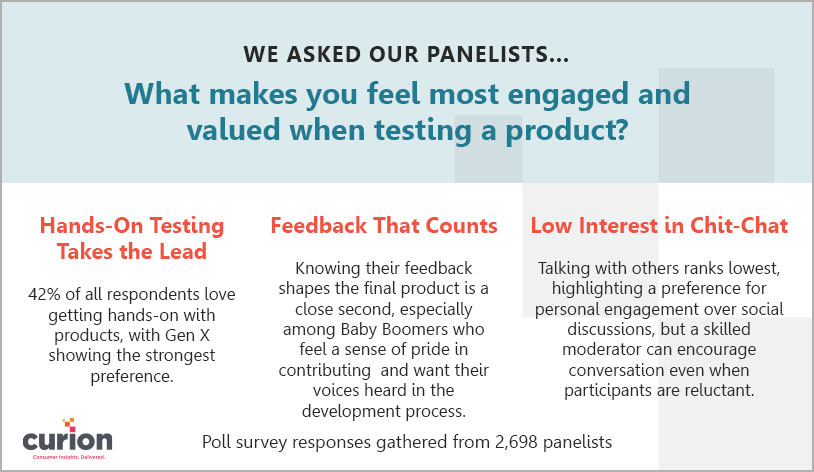
Jillian Pieta: Despite the age gap, I’ve noticed a few similarities when we’re running qual tests. I’ve seen both kids and seniors get really excited about hands-on experiences and the desire to be heard. Whether it’s a teenager talking about a new snack food or a retiree discussing a health product, they’re excited and feel special when they realize their opinion could shape the final product. I’ve also found that storytelling resonates across ages. When we ask participants to share a deeper product experience, we get rich responses that help uncover some unexpected insights.
We’ve heard a lot about Gen Z lately, with their huge spending power and potential as they grow into their prime spending years. What unique challenges and opportunities do you face when trying to reach and engage these groups?
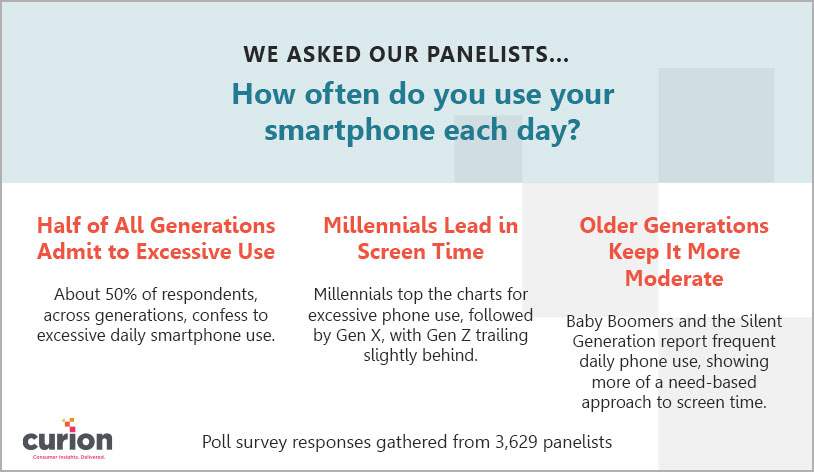 Rachel Orona: Consider reaching them where they spend their time, online or on a social media or gaming app. The survey must work well on a phone and any additional communication should be via text. Asking them to do a video upload to qualify will not be an issue for this age group. Be sure to be transparent about what they will be asked to do and how information will be used.
Rachel Orona: Consider reaching them where they spend their time, online or on a social media or gaming app. The survey must work well on a phone and any additional communication should be via text. Asking them to do a video upload to qualify will not be an issue for this age group. Be sure to be transparent about what they will be asked to do and how information will be used.
Michael Nestrud, PhD: One challenge is their rapidly evolving preferences – what’s trendy today might be outdated tomorrow. However, this also creates opportunities for constant innovation. To explain this, we did a snack food study where we faced the challenge of capturing Gen Z’s authentic opinions. By uncovering their snack preferences, we also saw their desire for adventurous flavors and transparency, and learned about the more sustainable trends in this age group, which helped our clients tap into this group and stay ahead of the trends curve.
What about older generation – what challenges and opportunities do you face there?
Jillian Pieta: Testing with older generations presents unique challenges and opportunities in qualitative research. In a study my team worked on, recruitment was difficult due to mobility issues, especially when addressing health-related topics, which often require special accommodations. Another challenge is the overwhelming amount of information older consumers encounter almost daily, which leads them to confusion and mistrust.
Rachel Orona: Consider online or visiting consumers at home to make it easier to participate and include questions to gauge cognitive abilities. Flexible schedules can increase their likelihood to participate, but avoid in-person tests after dark or during bad weather. Plan for enough time for completion of the testing, older consumers tend to spend longer completing the survey. I recall a project with 100% who were over age 65; they were told lunch would be served before the session and got extremely excited with many who arrived early, some as much as an hour early. It is a great age group to test due to high interest, participation levels and punctuality.
Gen Alpha is intriguing as they’re still so young and there isn’t as much information about them, compared to other generations. How do you ensure you’re getting unbiased responses from this generation?
Rachel Orona: When working with kids in research, we are mindful of their attention spans and adapt our methods. We use kid-friendly language and visual scales to help them understand and answer questions. A practice test is helpful to ensure they “get it.” Having a familiar face around – like a trained proctor or a carefully instructed parent – can make a big difference as long as they’re not adding bias.
Rachel Buss: I found that testing environments can greatly impact results, especially with younger consumers. When tests are done in schools, the presence of authority figures can pressure kids to give ‘right’ answers instead of their honest opinions. So, we create relaxed settings and incorporated fun activities to make the experience feel more like a conversation.
Michael Nestrud, PhD: In a juice test with young kids, I observed significant parental influence on responses. To mitigate this, after a certain age we recommend controlled separation during testing sessions. This approach reduces bias and yields more authentic data. We have noted instances where children’s responses align suspiciously with parental expectations – for example, citing ‘fruit’ as a favorite “candy” right after they looked at their mom.
Some Gen Alphas aren’t even born yet. How do you approach testing products for very young children, such as infants?
Rachel Buss: When it comes to testing products for young kids, I recommend using In-Home Use Tests. Kids are so much more relaxed and genuine in their own space. Plus, parents can pick the right time for testing, which really helps us see their true reactions.
Michael Nestrud, PhD: When it comes to testing products for infants and toddlers, we have to think outside the box. Parents play a crucial role in this process, as they can interpret subtle cues like touching a product a certain way that tells us how their child feels about a product. While we know parents can be biased towards their children, they know their own children’s behavior better than anyone else!
Rachel Orona: When testing baby products in a CLT setting, we ensure the appropriate equipment is available, such as sipper cups and baby spoons. We conduct with a small number of kids at a time to maintain a relaxed atmosphere, scheduling sessions when they are awake and alert. Involving parents in the testing process helps us gain better insights into how children truly feel about the products.
What are some common pitfalls to avoid when interacting with different generations during recruiting and testing?
Jillian Pieta: Using slang to connect with younger generations can feel inauthentic and may lead to disengagement, as it can come across as forcing a connection and potentially undermine their trust. Similarly, using outdated terms with older generations can seem contrived and create a barrier. It’s best to use clear and straightforward language that resonates with everyone.
Keevy Rubo: Kids are usually in school during the day, while millennials and boomers are typically at work. I recommend sessions after 5 PM so there is better attendance and engagement. We have to be mindful of schedules to ensure we get the best participants and responses.
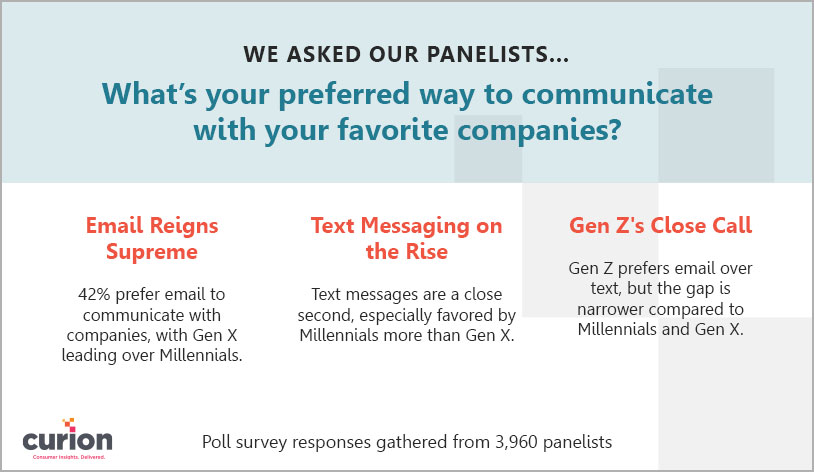 Rachel Orona: Understanding how each group likes to communicate helps facilitate engagement. Gen Z is more about texting and social media and emails, while older generations are more comfortable with phone calls or getting something in the mail.
Rachel Orona: Understanding how each group likes to communicate helps facilitate engagement. Gen Z is more about texting and social media and emails, while older generations are more comfortable with phone calls or getting something in the mail.
How do you adapt your communication style for different generations without coming across as inauthentic?
Jillian Pieta: We work carefully and thoughtfully to create real connections with consumers of all ages, or they won’t share their true thoughts. By adapting my own individual style and staying genuine at the same time, I build trust with every conversation where they feel comfortable and heard.
Rachel Orona: You cannot simply ‘try to be cool’ or alter your language to connect with younger generations; doing so can lead to a loss of respect. I have observed teenagers, particularly males, competing to ‘out-cool’ one another. Instead, I prioritize being genuine and respectful, fostering an environment where everyone feels at ease sharing their thoughts.
Rachel Buss: Being approachable, interested, and respectful is the key to connecting with any generation. When you show curiosity about what someone has to say, it breaks down barriers and invites them to open up more.
Can you tell us about any innovative or experiential research methods you’ve used to connect with specific age groups?
Michael Nestrud, PhD: I worked on a project for a major food company developing a food for gamers to help sustain performance throughout a gaming session. To connect with this audience, we renovated our focus group area into a living room setting with an Xbox, complete with rugs, lamps, appropriate lighting, and friends. “Gamer” participants evaluated the product while playing games, and it was fascinating to see how immersed they became. They forgot they were in a research environment and let down their guards, which gave us some great authentic feedback. No matter the age group, immersive environments are great ways to help people be more comfortable and thus reflect more natural behavior, which is what we’re going after.
Rachel Orona: One example that sticks out to me was asking kids to draw characters for a product advertisement. They got super creative; the marketing person in the back room was blown away and wanted to hire a few of the kids. We all learned that day how much the younger generations can lead to fresh and unexpected results.





